What Can Go Wrong?
Generators are a source of energy having the same electrical hazards as the electrical system at home or work - an electrical supply derived from a generator is no more or less dangerous than a supply derived from a building. However there some elements to consider as follows:
- There are potential issues around the fuel storage and refuelling of generators
- In order for electrical protection to be effective, the generator wiring configuration needs to be understood
- Generators may (but not always) require an effective connection with earth
- As a source of energy they present a fire risk and generator fires are not uncommon
- Modern loads (e.g. LED lighting) can cause instability problems with generators
Legal/ΒιΆΉΤΌΕΔ Requirements
- The Electricity at Work Regulations apply and requires that systems are set up so that protection is effective and the work done by people with sufficient competence
- The ΒιΆΉΤΌΕΔ expects temporary generators to be set up in accordance with the IET Practitionerβs Guide to Temporary Power Systems which has the most up-to-date guidance
- The temporary electrical system should be designed in accordance with BS 7671 and deployed and managed in accordance with BS 7909
- Those setting up generator systems should have sufficient competence to do so. See the ΒιΆΉΤΌΕΔ Guidance on assessing competence
General Requirements and Control Measures
- In all cases where generators are being used, an electrically competent person must specify and design the electrical system. Small generating sets may be specified by a competent person who can give instruction to the users and will not need to be present when the system is operational, so long as that any control specified are put in place and checked
- Generators in the UK must be sourced and managed by an approved supplier, outside the UK use a reputable supplier. Most large UK generator companies can recommend or help source suppliers in other countries
- Ensure that the supplier is aware that they are responsible for managing the generator and the support infrastructure including fuel and connections
- Generally, all generators should have a reliable and effective connection to earth and this is especially true of larger sets (e.g. skid or truck mounted)
- Smaller sets may have a type of wiring where a connection with earth doesnβt have any benefit. Such generators are best avoided unless only supplying one or two items of equipment. It is important to seek advice or check the generator with a plug-in socket tester which will show an apparent fault with the wiring
- Large sets may be operated without an earth electrode for short durations (e.g. several hours on a drama location), or where it is powering a single truck such as a scanner which has internal protection built-in. However the output of the generator must be protected by an RCD rated at no more than 100mA and a time delay of no more than 0.2 seconds. If running un-earthed it is really important to make sure that cables are protected from mechanical damage
- All generators regardless of size should have an RCD protecting the output. The RCD setting will depend on the loads connected but it will help provide better protection in the event of damage to the cables or distribution
- For supplies around 10 kW or less, electronic (inverter) generators are preferable as they will be more tolerant of modern equipment
- Generally diesel fuelled generators are preferable to petrol. However for environmental reasons gas or fuel cell generators (e.g. methanol) are promoted.
- Battery storage units can make a significant reduction in fuel use and should be used where possible. Note that these should be viewed the same as generators from an electrical safety perspective
- If a petrol or other fuel-cell generator is being used then under no circumstances should it be refuelled when hot or whilst running
- The generator should be located a safe distance from vehicles and buildings. Exhaust gases must not be allowed to enter buildings (e.g. through doors/windows or ventilation intake grills) or vehicles
- The generator must be positioned on level stable ground with stabilising legs deployed (if applicable)
- Fire extinguishers capable of dealing with both electrical and fuel fires (CO2 and powder respectively), should be positioned nearby, not at the generator itself
- Generators should not be sited close to river banks streams or other water courses
- A spill kit should be provided with the generator, by the supplier, to be used in the event of accidental spillage of fuel oils. Ensure the spill kit is visible and accessible
- Materials used to absorb spillages of fuel oil should be disposed of as hazardous waste with an appropriately licensed waste contractor
- Ensure the risk assessment covers generator hire and that contact details for emergency response contractor are recorded on the productionβs emergency contact list
- Before using a generator, it is important that the operator fully understands how it is designed to operate in terms of electrical safety
- Ensure generator compounds are readily accessible by the emergency services in the event of an emergency
Multiple Source Earthing
Where multiple sources of supply are used (e.g. multiple generators, generator supply being used inside a building) great care must be taken due to a variety of additional risks. Consult with the electrically competent person appointed or your Safety Adviser.
Generator Earth Electrodes
The purpose of the earth electrode is to provide a path for current to flow back to the generator if there is a fault with the system β such as a cable on the floor getting damaged. In order for enough current to flow and to operate protective devices (such as circuit breakers or RCDs) the electrical contact between the electrode and the ground must be good enough, i.e. a low enough resistance.
- Contrary to popular belief amongst many electricians, earth is not a βreferenceβ. It forms part of a fault path for current to flow
- The resistance of the electrode must therefore be low enough to ensure operation of the protective devices at the source of supply. This may require an electrical test to verify
- A specific electrode may not be necessary. Metal fences, bike railings or structural steelwork are all worth considering for example. Always avoid street furniture which has an electrical supply, such as lampposts and bus shelters. This is because the electrical earth of these may not be reliable.
- The electrode does not have to be at the generator and can be any convenient place where a good contact with earth can be made
They are no use if they are ineffective or unreliable, e.g:
- Spike under a wheel
- Rod in a drain
- A vehicle chassis via its rubber tyres parked on the road
- Skids of the generator sitting on the grass
- Street furniture with electrical installations β lamp posts, bus shelters, equipment cabinets
Division Specific Issues
- This guidance applies across the ΒιΆΉΤΌΕΔ
- Incorporating Radio OB MS M009-09 Use of Generators.
Useful documents
-
[ΒιΆΉΤΌΕΔ Network only] Version 2. May 2023
Recommended links
-
Certificate in Temporary Electrical Systems Electrical safety training course designed to ensure those working with electricity in temporary distribution systems on productions can comply with BS 7909
ΒιΆΉΤΌΕΔ electrical safety topics
-
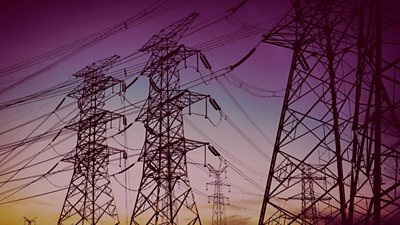
Electrical safety homepage
A selection of guidance documents and general advice in relation to Electrical Safety in ΒιΆΉΤΌΕΔ premises, on productions and events. -

ΒιΆΉΤΌΕΔ policies for electrical safety
ΒιΆΉΤΌΕΔ policies detailing its overarching approach to the management of electrical safety. -

ΒιΆΉΤΌΕΔ electrical safety guidance documents
Summary of ΒιΆΉΤΌΕΔ electrical guidance (links within document titles) -

Electrical risk assessments and reporting of incidents
This section will help those who need to do a risk assessment where electricity is being used. It also gives guidance on reporting requirements for any electrically-related incident. -

Electrical safety in ΒιΆΉΤΌΕΔ Premises
General guidance on use of electricity and electrical equipment when working in ΒιΆΉΤΌΕΔ Premises. -
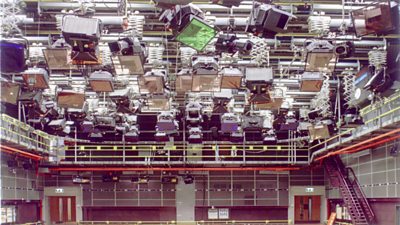
Electrical safety in Studios
A straightforward guide to electrical safety management in studios and similar locations. -

Safety of electrical equipment and appliances
Requirements for electrical safety of electrical equipment and appliances (βPAT testingβ). -
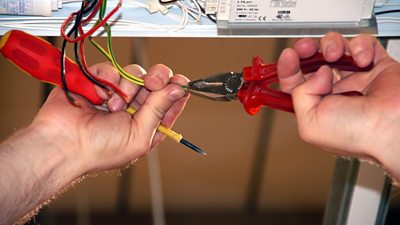
Electrical competency and Part P requirements
Guidance on what to look for when employing contractors or freelancers to do electrical work. -
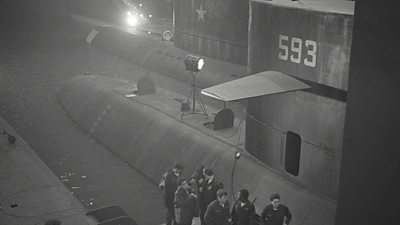
Electrical safety requirements for Production Managers
Find out what you should know and what measures should be put in place for your production. -

Bringing your own equipment to work and contributorβs equipment
Basic guidance on the safe and appropriate use of personal electrical equipment whilst at work and requirements. -
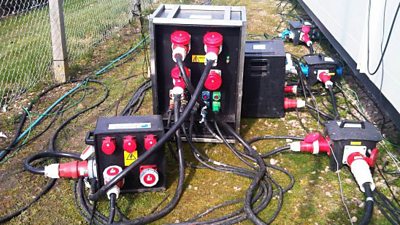
Temporary electrical systems and BS 7909
Requirements for electrical safety management in accordance with BS 7909 for all temporary electrical systems. -

Small and Simple Temporary Electrical Systems
Guidance to help understand the requirements for simple temporary electrical systems such as interviews or photo shoots for example. -
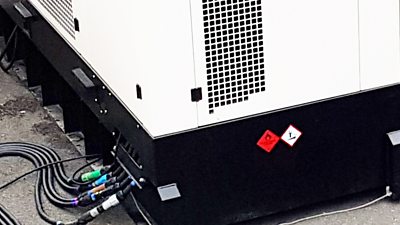
Generators
Guidance on the use of temporary generators including the application of earth electrodes. -
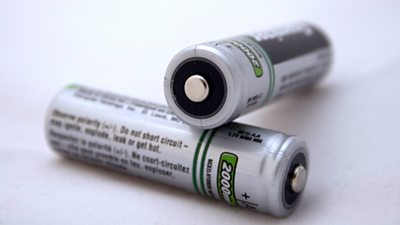
Batteries
Guidance on the safe use and storage of batteries. -
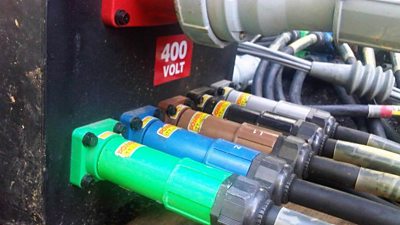
Certificate in Temporary Electrical Systems
An electrical safety training course designed to ensure those working with electricity in temporary distribution systems on productions can comply with BS 7909 and the relevant parts of BS 7671. -
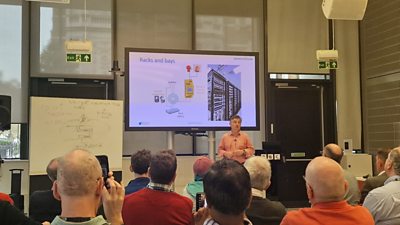 Electrical Principles Workshop to harmonise the approach to health and safety management on electricity across all areas.
Electrical Principles Workshop to harmonise the approach to health and safety management on electricity across all areas. -

External information and guidance on electrical safety
Links providing further information on all aspects of electrical safety, from external bodies (IET, HSE, Etc.) that ΒιΆΉΤΌΕΔ staff may find useful. Some guidance is required to be purchased. -

Health & safety Alerts and News
All the Health & Safety Alerts and News from the H&S Teams
More from SSR
-
Your platform to record accidents, risk assessments, assurance monitoring and inspections
-
Safety Equipment Stores
Just one number to call: 0844 800 8875 -
ΒιΆΉΤΌΕΔ Safety Guidelines
An A-Z of ΒιΆΉΤΌΕΔ's Health and Safety Guidelines -
Safety Advice Line: 0370 411 0464 Email: safety@bbc.co.uk
- A-Z of ΒιΆΉΤΌΕΔ Safety Guidelines
- Accident Reporting and Investigation
- ΒιΆΉΤΌΕΔ Health & Safety Policy
- Contractors (incl. vetted lists)
- Contributors
- Fire Safety
- Freelancers
- Independent Production Companies
- Risk Assessment
- Safety Alerts
- Safety Responsibilities
- Safety Training
- Sets & Premises Safety Guide
Events guidance - key links:
- Exhibitions
- General Guidance
- Indoor Location Recce Checklist
- Outdoor Location Recce Checklist
- Major Incidents & Emergency Planning
- Marketing and Promotional
- Noise Exposure
- Planning and Management
- Responsibilities
- Responsibilities Form
- Laser Lighting Effects
- Strobe Lighting
- Temporary Stages and Rostra
Health topics - key links:
- (ΒιΆΉΤΌΕΔ network only)
- Contributors Fitness to Participate
- Display Screen Equipment (DSE)
- (ΒιΆΉΤΌΕΔ network only)
- First Aid and Welfare on Location
- International Travel - Risks & Health
- Manual Handling
- Mental Health: ΒιΆΉΤΌΕΔpage
- (ΒιΆΉΤΌΕΔ network only)
- Personal Health and Wellbeing
- Pregnancy
- Psychological Trauma Support & Trauma Risk Management (TRiM)
- Tiredness and Fatigue
- Travel Health Contacts
ΒιΆΉΤΌΕΔ High Risk - key links:
- CBRN and Industrial Spills
- Covert Filming
- Crisis Management and Security Support
- Demonstrations, Protests and Crowds
- Disaster Coverage
- Door Stepping
- (ΒιΆΉΤΌΕΔ network only)
- (ΒιΆΉΤΌΕΔ network only)
- Public Order
- Safety Equipment Stores
ΒιΆΉΤΌΕΔ Journalism - key links:
ΒιΆΉΤΌΕΔ Productions - key links:
- Aerial Filming and Airfields
- Animals: Displaying and handling for performance
- Boats: Working on
- Children and Young People
- Driving
- Electrical Equipment and Systems
- First Aid and Welfare on Location
- Food Safety (Cooking and Catering)
- Remote Location Working
- Roads and Streets: Working by
- Security of Productions on Location
- Stunts
- Tiredness and Fatigue
- Unmanned Aerial Systems (UAS aka Drones)
- Vehicles: Recording in, from and around
- Working at Height: Mobile Elevating Work Platforms
- Working at Height: Tower Scaffolds
ΒιΆΉΤΌΕΔ Radio - key links:
- (ΒιΆΉΤΌΕΔ Network only)
ΒιΆΉΤΌΕΔ Security - key links:
ΒιΆΉΤΌΕΔ Sport - key links:
About this site
This site describes what the ΒιΆΉΤΌΕΔ does in relation to managing its health, safety and security risks and is intended for those who work directly for the ΒιΆΉΤΌΕΔ.
It is not intended to provide instruction or guidance on how third parties should manage their risks. The ΒιΆΉΤΌΕΔ cannot be held liable for how this information is interpreted or used by third parties, nor provide any assurance that adopting it would provide any measure of legal compliance. More information
Some links on this site are only accessible when connected to the ΒιΆΉΤΌΕΔ network
